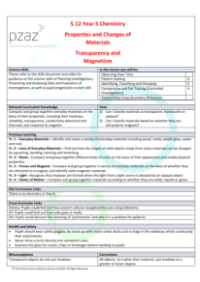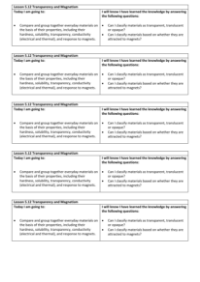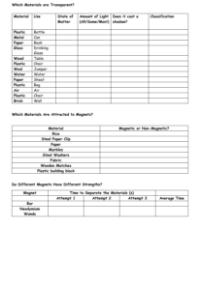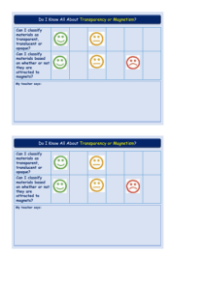Transparency and Magnetism - Teacher Explanation

Science Resource Description
Welcome to Lesson 5.12 on Transparency and Magnetism, a part of the Year 5 curriculum on Properties and Changes of Materials. In this lesson, students will delve into the fascinating world of everyday materials, learning to categorise them based on properties such as hardness, solubility, and importantly for this lesson, transparency and magnetic response. As a safety precaution, students must wear protective goggles during practical activities, ensure the classroom is prepared with chairs tucked in, long hair tied back, and walkways clear, especially as glass and torches will be used. The lesson also presents an opportunity to explore cross-curricular themes, with historical research on lodestone's use in ancient navigation, the process of making soda glass in Design and Technology (DT), and the meaning of 'pentimento' in art.
The practical part of the lesson involves students classifying materials as transparent, translucent, or opaque. They will experiment with various items such as plastic trays, carrier bags, cardboard, and more, using a torch to observe how light passes through these materials and noting the shadows cast by each. This hands-on activity helps students grasp the concepts of light transmission and material classification. Additionally, they will explore magnetism by testing which materials are attracted to magnets, learning that only certain metals like nickel, cobalt, and iron have magnetic properties. The students will also compare the strengths of different magnets, including fridge magnets, bar magnets, and a neodymium wand, by separating magnetic from non-magnetic materials as quickly as possible. Through these engaging tasks, students will discover the factors that affect a magnet's strength, such as the material it's made from and its size, providing a comprehensive understanding of transparency and magnetism.






